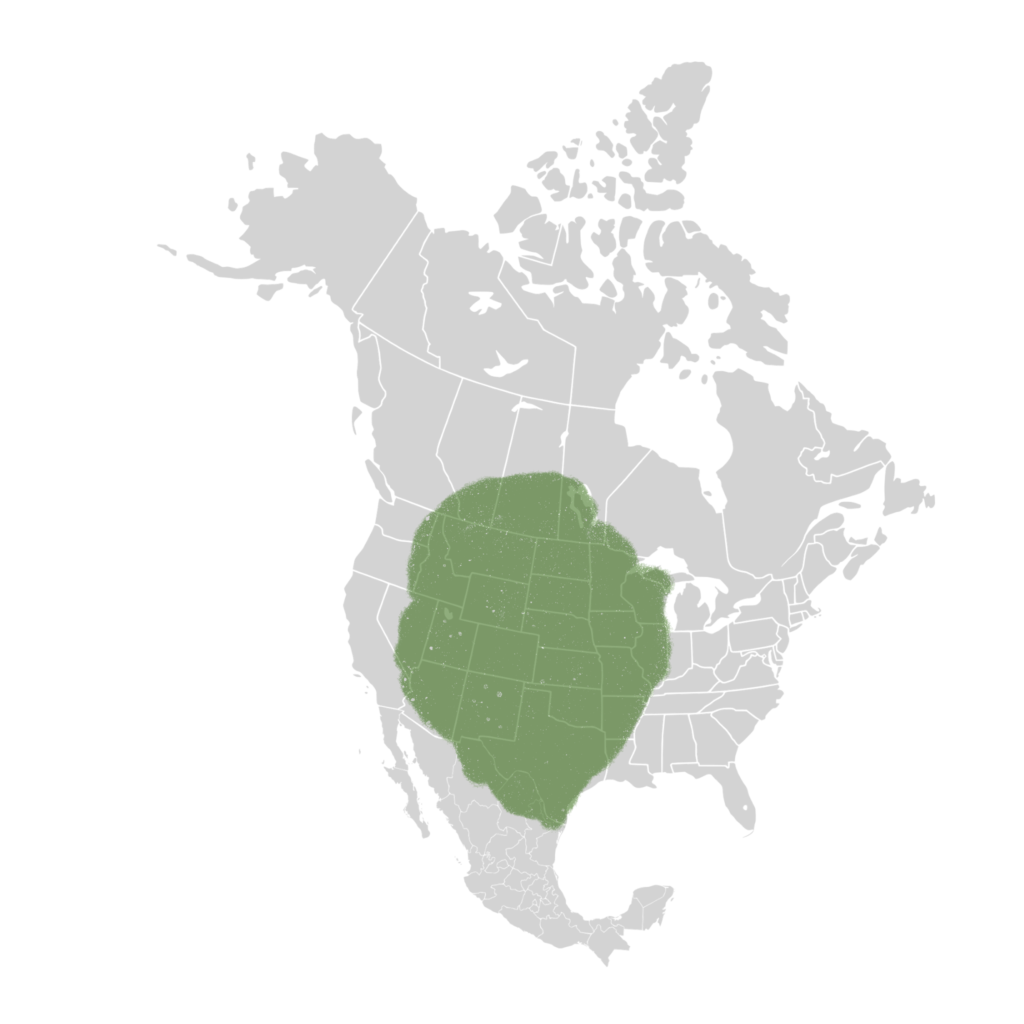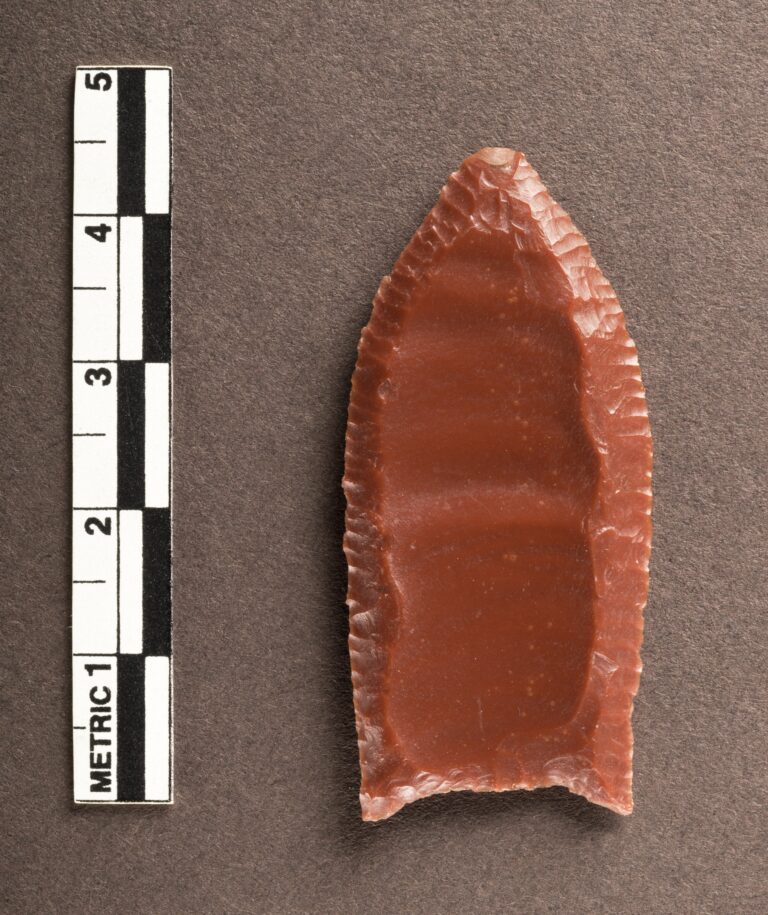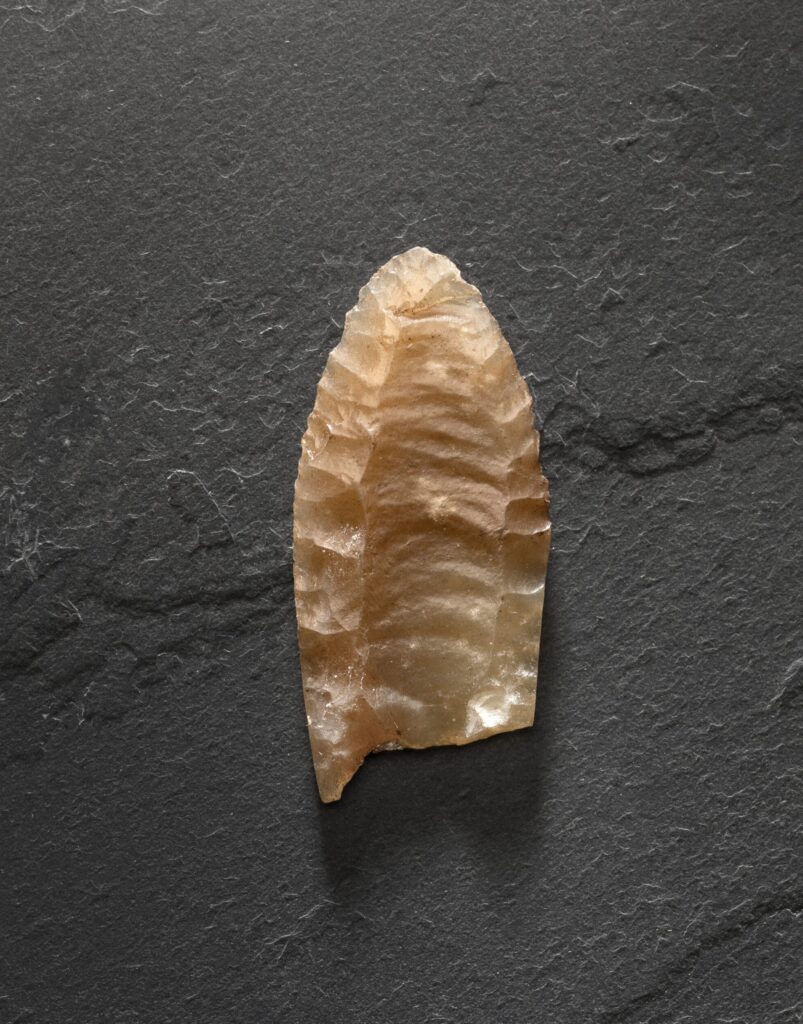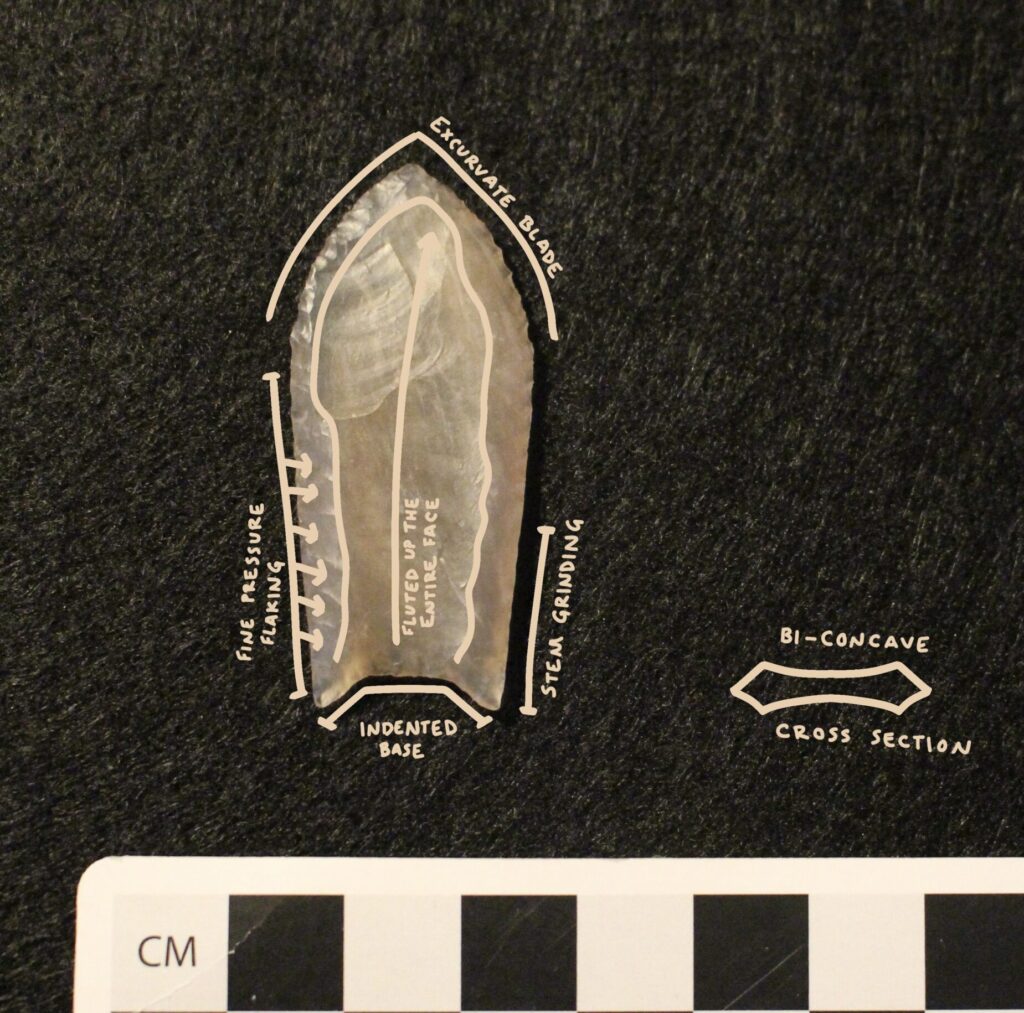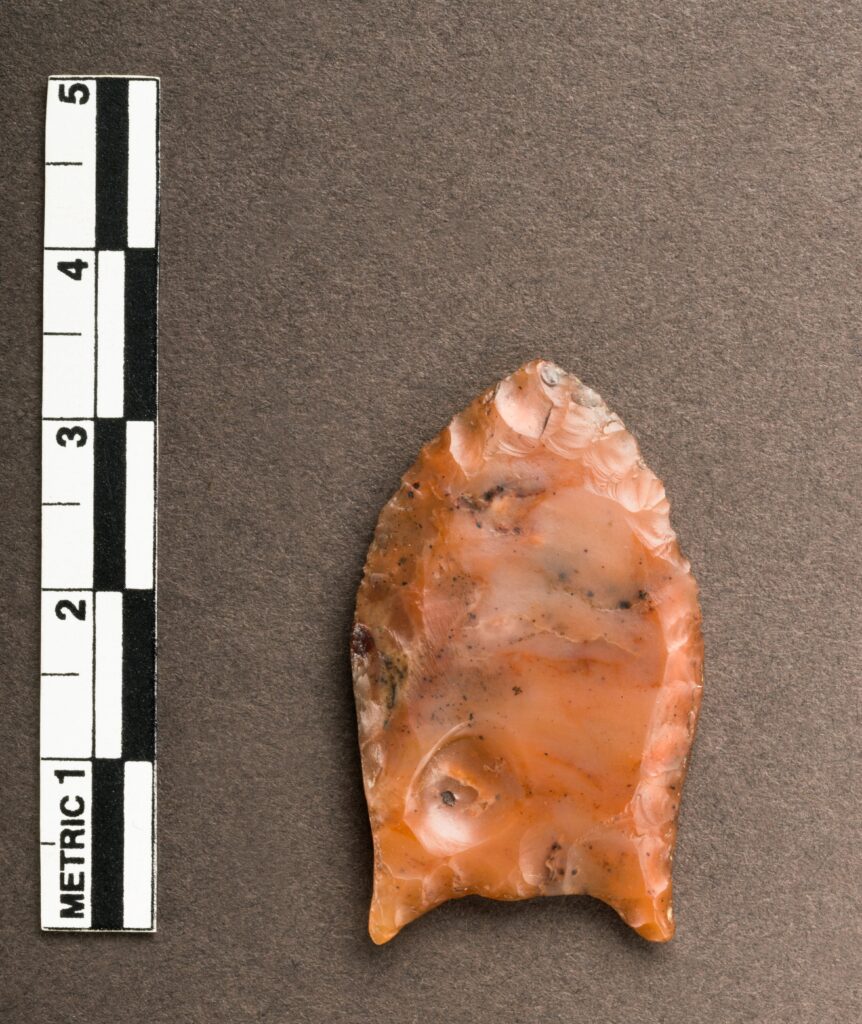Folsom
13,000 - 10,000 BC ; [Paleo]
Folsom is the cultural complex which chronologically follows Clovis. It should be noted, however, that Goshen points may be a transitional between these two complexes. Not only that, but I would also like to make note of the scientific debate when classifying Midland, Plainview, and Folsom points as they all share many similarities. The relationships between these points and their makers are not currently well understood.
Unlike Clovis points which we see across North America, Folsom points are rarely found further West than the Rocky Mountains. The users of these points are often characterized as bison hunters of the Great Plains. Explanations for this could perhaps be the changing climate in the America’s, leading to the extinction of many megafauna species – including mammoth.
Campsites like Lindenmeier begin to show up in the archaeological record at this time. This is an interesting distinction, as many other sites are just associated with animal kills and processing. This illuminates other aspects of their lives beyond subsistence methods. Some examples of this would be the possible gaming pieces we’ve found at the site, along with bone needles and evidence of point production.¹
Folsom groups also began to inhabit high-altitude environments, as evident by points found in Middle Park, Colorado. The points had been made with local materials, and were located in areas where game would be most common. The site density in Middle Park is on par with much of the plains, meaning Folsom people may have been living here more commonly than previously thought.¹
Folsom Points
Like Clovis, Folsom people are using high quality materials and continuing to flute their points. Fluting is a dangerous practice as it has a high failure rate and can lead to broken points during manufacture. A few sites (Lindenmeier, Hanson, Cattle Guard) have unfluted Folsom points, maybe due to less lithic availability. Regardless, there are still fluted examples far from material sources.
The reason for fluting is still debated; explanations range from stylistic preference to easier resharpening.
Sharpening of points comes in the form of pressure flaking, which the Folsom makers were exceptional at.
Typology
- Form
- Base
- Horizontal Cross Section
- Vertical Cross Section
- Reduction
- Stem Grinding
- Basal Grinding
- Triangular Lanceolate
- Straight to Concave
- Bi-Concave
- Uniform
- Pressure
- Yes
- Rarely
Distribution map
Notable Sites
- Lindenmeier, Colorado – Possibly the largest known Folsom site. Near the Colorado-Wyoming border it is a campsite with artifacts ranging from carved bones – to unfluted Folsom points. Thought to be a place of aggregation for various peoples.² ¹
- Hanson, Wyoming – Another campsite with a large amount of lithic assemblages. There is possible evidence for ancient structures, with patches of circular hard packed ground in three spots. More evidence is needed to confirm these suspicions. Red ochre is also prevalent, however the reason for it’s use is unknown. ² ³
- Middle Park, Colorado – Not so much of one site, but a range of habitation. This area shows Paleo habitation of high altitude environments. It was identified by various surface finds of Folsom points across the valley. Below are specific sites: ¹
- Lower Twin Mountain
- Hay Springs
- Barger Gulch
- Mountaineer
- Stewarts Cattle Guard, Colorado – A bison kill site with a nearby processing camp. The mass kill happened in a sand dune where it may have been harder for the bison to move. Excavations have revealed that 45 bison were killed here. The associated camp has helped researchers learn more about the processing techniques associated with Paleo people.¹
References cited
Typology:
Taylor, J. (2006). Projectile points of the high plains: New perspectives on typology based on examinations of original type site specimens (1st ed). Jeb Taylor Artifacts.
¹Cassells, E. S. (1997). The Archaeology of Colorado (Rev. ed). Johnson Books.
²Kornfeld, M., Frison, G. C., Larson, M. L., Bradley, B. A., & Frison, G. C. (2010). Prehistoric Hunter-Gatherers of the High Plains and Rockies (3rd ed). Left Coast Press.
³Carlisle, R. C. (Ed.). (1988). Americans before Columbus: Ice-Age origins: selected papers from the First Columbian Quincentenary Symposium, Smithsonian Institution, September 26, 1987. Dept. of Anthropology, University of Pittsburgh.

